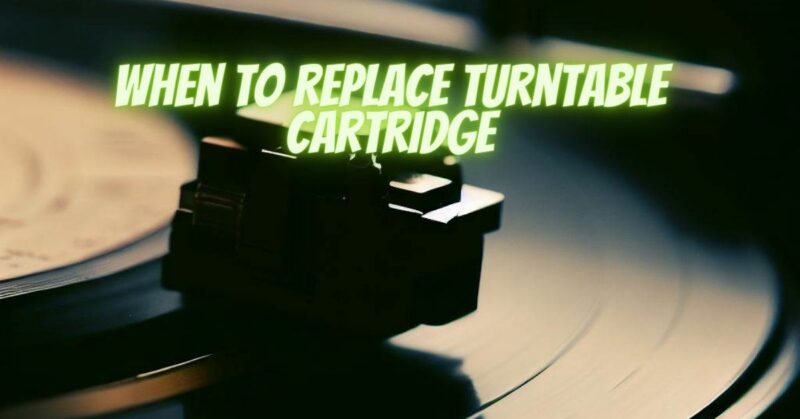The cartridge is a crucial component of a turntable, responsible for translating the grooves on vinyl records into electrical signals. Over time, wear and tear can affect the performance of the cartridge, potentially leading to degraded sound quality. In this article, we will explore the signs indicating that a turntable cartridge needs to be replaced and the potential consequences of delaying its replacement.
Signs that Indicate Cartridge Replacement:
- Worn or Damaged Stylus:
- A worn or damaged stylus is a primary indicator that the cartridge needs replacement. Look for visible signs of wear, such as a flattened or chipped diamond tip. A worn stylus can result in poor tracking, skipping, distortion, or a loss of high-frequency detail.
- Audible Deterioration in Sound Quality:
- If you notice a decline in sound quality, such as a lack of clarity, muffled or distorted audio, or excessive surface noise, it may be a sign that the cartridge is reaching the end of its lifespan. As the stylus wears out, it fails to accurately track the grooves, resulting in compromised audio fidelity.
- Inconsistent Tracking or Skips:
- A cartridge nearing the end of its life may struggle with consistent tracking, causing the stylus to skip or jump across the record surface. If you experience persistent tracking issues that cannot be resolved through adjustments, it may be an indication that the cartridge needs replacement.
Consequences of Delayed Replacement:
- Deterioration of Sound Quality:
- Continued use of a worn or damaged cartridge can lead to a progressive decline in sound quality. The stylus may struggle to accurately track the grooves, resulting in diminished detail, frequency response, and overall fidelity. This can detract from the enjoyment and immersion of your vinyl listening experience.
- Increased Risk of Record Damage:
- A deteriorating cartridge can pose a risk to your vinyl records. A worn stylus may exert excessive pressure or fail to maintain proper contact with the record surface, increasing the likelihood of groove damage, scratches, or groove widening. Replacing the cartridge in a timely manner helps preserve the lifespan and condition of your precious vinyl collection.
- Accelerated Wear on Records:
- An improperly functioning cartridge can cause increased wear on your records. As the stylus fails to track accurately, it may generate excessive friction or drag on the grooves, leading to accelerated wear and potential degradation of the vinyl records themselves. Regular cartridge replacement helps minimize unnecessary wear and ensures longevity of your records.
Conclusion:
Recognizing the signs indicating that a turntable cartridge needs replacement is crucial for maintaining optimal sound quality and preserving your vinyl collection. Worn or damaged stylus, audible deterioration in sound quality, and inconsistent tracking or skips are key indicators. Delaying cartridge replacement can result in deteriorating sound quality, increased risk of record damage, and accelerated wear on your vinyl records. By promptly replacing the cartridge when necessary, you can continue to enjoy high-quality sound reproduction and extend the lifespan of both your cartridge and vinyl collection.


